
Here in the US, “lift rides” and “backcountry” are two mutually-exclusive terms. But in Europe, they don’t have to be. On my second day riding in Switzerland we used a pair of lifts to access one of the most remote trails that I had the chance to ride in the Alps: the Welschtobel Trail.
Using the same two-lift combination from the day before, Beni and I rode to the top of the mountain ridge, high above tree line. But instead of dropping rider’s left, we descended to rider’s right, dropping into the Sanaspnas Valley below a massive, jagged mountain peak.
While I had somehow avoided flatting the day before, today would not be my day, as I pinch flatted my rear tube on our first short descent through a series of rock gardens filled with sharp, square-edged tire slicers. Perhaps I was a bit distracted by the views–it was hard to concentrate with that mountain in my face!
[see_also id=”196366″][/see_also]

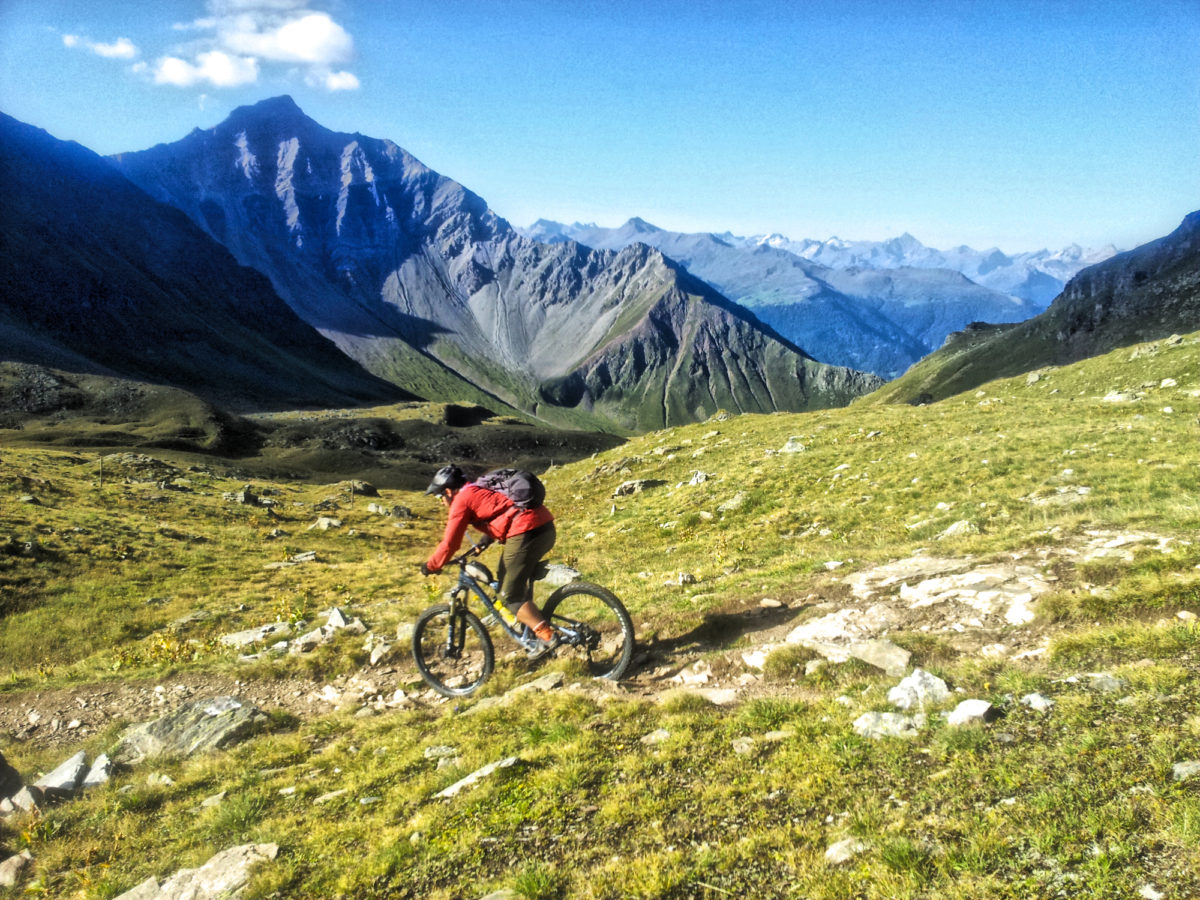
After changing the flat, finally we reached the valley floor. Unlike the day before where the only climbing required a few quick spins on the pedals, we took a hard left, shouldered our bikes, and hoofed it toward a mountain pass far above us.

Thankfully Beni had warned me about the hour-long hike-a-bike the day before, so I was mentally prepared to do the work. I’d heard that the Swiss love to throw their mountain bikes on their shoulders and climb, and climb we did. While I’m not personally a fan of carrying the weight of the bike on my shoulders and instead prefer to push it, the trail was so narrow and so steep (essentially a rocky staircase), there was no option but to throw the top tube on my shoulders and put one foot in front of the other.

After a quick break for a snack, we dropped down the other side of the pass, traversing around the upper end of a massive valley. The valley dropped away far, far below us, and while we passed a trail descending straight down and out of sight, descending that direction would drop us into an entirely different part of Switzerland that we didn’t want to end up in. After a bit of descending (but not too much), some more pedaling and hiking brought us to the top of a second pass: Furcletta.

As we caught our breath on the top of Furcletta, some angry clouds and a bit of rain moved in on top of us, so we quickly donned our jackets, pumped some air into my tire since I had sprung another, slow leak, and prepared to drop off the top of the mountain ridge into the main course of the ride: the gorgeous Welschtobel Valley!

While we had tried to stay as high as possible between Culmet and Furcletta, finally it was descending time, The upper portion of Welschtobel rolled downhill at the perfect grade for high speed, yet not-too-steep ripping, through ribbons of dirt singletrack, scree, and massive rock gardens. With not a tree in sight, the scenery was grandiose on a scale that overwhelms the senses:
A shallow stream crossing provided a change of pace from the dry, rocky moonscape:
Shortly after cresting the rise pictured above, I was awestruck by the view as the second section of Welschtobel spread out before us, the valley steepening and narrowing, with a beautiful ribbon of technical singletrack clinging precariously to the mountain side. As we set up for a few photos before digging our tires into a never-ending descent, I knew that this had to be one of the very best new trails that I had ridden all year.
No matter how gorgeous a place may be, if a descent is engaging enough I can lose track of myself and my goal of capturing stunning photos, as I focus solely on the next scree-filled vertical drop and corner berm in front of me. I can completely and 100% forget to take any photos–or simply not care one iota about pulling out the camera. As we ripped down the valley, I found myself in exactly that situation. Thankfully, Beni grabbed a couple of snapshots.

Until we reached this suspension bridge, that is. It’s not every day you get to ride a suspension bridge on your mountain bike:
After a few more miles of flowy descending in the trees with the occasional root launch, we reached the town of Arosa. While the main course of our ride was complete, we still had a lot of work to do to get back to the Lenzerheide side of the mountain range.
Since we had a long journey ahead of us, we took an hour to grab lunch and refuel–I opted for a Red Bull–and do some much-needed work on our mountain bikes. The long, rocky descent had taken its toll: I changed another flat tire that had slowly been leaking since the top of Furcletta as Beni replaced a broken derailleur cable.
From Arosa we took another lift to the top of the mountain range that separates Arosa and Lenzerheide, but unbeknownst to me, dropping down the Lenzerheide side wouldn’t be as easy as it might seem. Separating the Arosa side of the ridge where we were standing and the Lenzerheide side was an above-tree-line basin about a mile and a half across, that we would have to descend down into and then pedal back out of, in order to reach our final descent.
But thank goodness, there’s a cable car running across the valley, from one side to the other!
As I was starting to get my hopes up that we might be done climbing for the day, Beni dashed them by informing me that while the ski area had just built this lift last year, it wasn’t open right now. So yes, we’d be in for some more work. Beni’s hope is that as Arosa and Lenzerheide continue to collaborate better and collectively realize the positive impact that mountain biking is having on the region, that this lift will run all summer as well as all winter.

For now, we dropped down into the basin, and slowly worked our way across to the other side. This stretch of high-alpine singletrack was truly spectacular and very pedalable on a bike, but after two very long days of riding on top of two long weeks of riding before that, I was absolutely shattered and just ready to be down at the bar, tipping back a cold one.

Finally, we were on top of the ridge, overlooking Lenzerheide, with only downhill in front of us. But as I followed Beni down the mountainside, we blasted down gravelly doubletrack and service roads, rapidly losing our hard-won elevation. What’s the deal?!
Beni explained that the official Welschtobel route basically follows service roads down the mountainside, with no real singletrack. But after a couple of minutes of this gravel descending, Beni shouted back “follow me,” and we banged a hard right off the dirt road, clattered through a cattle gate, and sunk our tires into the wicked-steep, technical, slippery dirt of the poorly-marked historic trails that I had grown so fond of the day before.
It probably didn’t help that my nerves were shot and my handling was suffering, but a hard “smack” of the rim against a sharp-edge rock signaled another stop for me to change my third flat of the day. At this point, I was completely over changing flat tires, and ready to be done.
Flat fixed, I gingerly worked my way down the rest of the singletrack, finally spitting out onto a road in the valley below. Mission accomplished!
This track begins from the top of our initial two-lift series out of Lenzerheide.
While this ride was tough–even tougher than anticipated–as I looked back on the year in our recent podcast, I realized that Welschtobel was my single favorite trail that I rode in the entirety of 2016. With all the trails I had the privilege to explore this year, that’s a high honor! With challenging climbing, mind boggling scenery around every corner, and chunky, entertaining, near-endless descending, this is a must-ride for anyone visiting this area.
[see_also id=”201199″][/see_also]
While Welschtobel is well-marked on the map and is, along with the Biketicket 2 Ride, one of the GPS Tours in the region that you can follow on your own, the hour-long hike-a-bike is a deterrent to most of the masses. The only people we saw until we reached Arosa were a couple of hikers that split off our route and headed up a different mountain peak.
Despite not being far in mileage from both Lenzerheide and Arosa, we were extremely isolated due to the formidable mountain terrain and the utter lack of civilization. Despite the lifts we utilized along this route, Welschtobel provides a true taste of Swiss backcountry biking.
Hotel Dieschen: Bike Hotel Extraordinaire

One of the surprising highlights of our stay in Switzerland was the incredible bike hotel where we stayed. My wife was able to join me for this leg of the European Tour, and we spent a total of five nights at Hotel Dieschen.

To start, Hotel Dieschen has signed on to be a bike hotel by Lenzerheide’s standards. This means that they must offer a bike wash, repair station, and a safe place to store your bike at night. But here’s the real kicker: you get a free lift ticket for every night that you stay at the hotel.
On their website Hotel Dieschen lists a 4-day, 3-night “Bike Package” which includes:
3 nights including half board. | Welcome-Apéro | 4-day mountain railway ticket 2 lunch packages Wellness | Laundry service Washing machine for bikes Workshop and parking
All of this for $390!
Honestly, this is an incredible deal. In my experience, almost everything is expensive and overpriced in Switzerland, so getting food, lift tickets, and lodging for three nights for $390 is pretty unreal.

Further ratcheting up the convenience factor is Dieschen’s location. For both of the major rides I did in Lenzerheide, plus access to the downhill bike park, you need to take the Rothornbahn lift. This lift happens to be a short downhill coast from Dieschen. And between Dieschen and the lift a couple hundred yards away, you’ll find a dirt jump park with progressive jump lines to practice your skills. If you weren’t able to get enough shred time on the lifts during the day and you’re jonesing for an evening session, grab your bike, head literally across the (one-lane) street, and you’re on a pack of dirt jumps.
How can you beat that?
With incredible food.

While at first we overlooked that “half board” line in the description, the food at Dieschen proved to be phenomenal! Every morning we enjoyed a sit down continental breakfast with superb choices–the best breakfast spread I experienced in Europe this year. But what really shone was the evening meal.
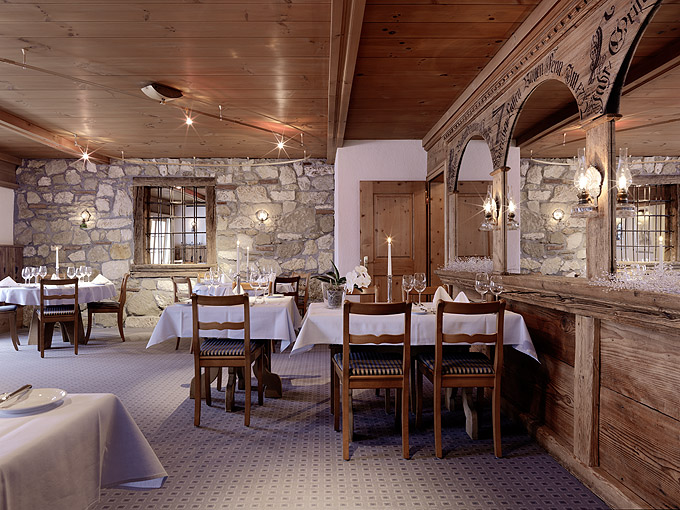
Every evening we were treated to a four course meal of incredibly delicious dishes. Every evening our waitress would come out and hand us the menu for the evening, a fixed menu that changed every day, and asked us, “Is it okay?”
The only problem was, the menu was in German.
The first evening we asked if there was an English menu. Unfortunately the answer was no. Then we asked what the menu said, and our waitress had to get her supervisor to translate for us. But once we realized that it was a fixed menu instead a list of options, we were just like, “yes, this is great!”
We learned we had nothing to fear, because the food every evening was exceptional. For the evenings following the first one, we just responded by saying, “yes, this looks awesome!” And while we had no idea what was coming, every dish was delicious and absolutely perfect!
Granted, this method of being surprised by what you’re served might not be for everyone, but my wife and I have become big fans of simply eating what’s laid in front of us and loving every bite. Our subscription to Blue Apron has probably helped with this willingness to try new, somewhat exotic dishes chosen for us by another person, so if you’re closed-minded when it comes to your dining choices, maybe you won’t enjoy this as much as we did.
One evening we went out to eat at one of the most popular restaurants in the town of Lenzerheide. While we had an absolutely great time hanging out with the folks from Lenzerheide Tourism and the food at the restaurant was tasty, we were so excited to be back at Dieschen the following evening. The sum total of the evening meals we enjoyed at Hotel Dieschen made up the best four meals that we ate during our entire time in Switzerland (and Germany and Austria, for that matter).
No matter how good the food and amenities may be, if you don’t sleep well, your lodging experience is shot. But the rooms at Dieschen were comfortable, beautiful, and exactly what we needed.

Decorated in a rustic modern style that’s becoming all the rage in mountain towns around the world, rough, reclaimed wood doors and siding paired surprisingly well with metallic fixtures and a modern walk in shower. Top it off with a private deck ringed with flowers that looked like they’d been super-saturated in Photoshop, and incredible mountain views in every direction, and the word “paradise” doesn’t seem like such a stretch.

Rarely do I type this many words to talk about my lodging for a trip. And in no way was this recommendation forced or coerced, aside from the fact that they hooked us up for free. Rather, the incredible service from the staff, the beautiful facilities, and amenities approaching the all-inclusive level combined to make Hotel Dieschen possibly the best place I’ve ever stayed on a mountain bike trip in my entire life. If you decide to ride in Lenzerheide in the future, do yourself a favor and book at Hotel Dieschen!
[see_also id=”199303″][/see_also]
Thanks to Lenzerheide Tourism and Hotel Dieschen for making this trip possible.












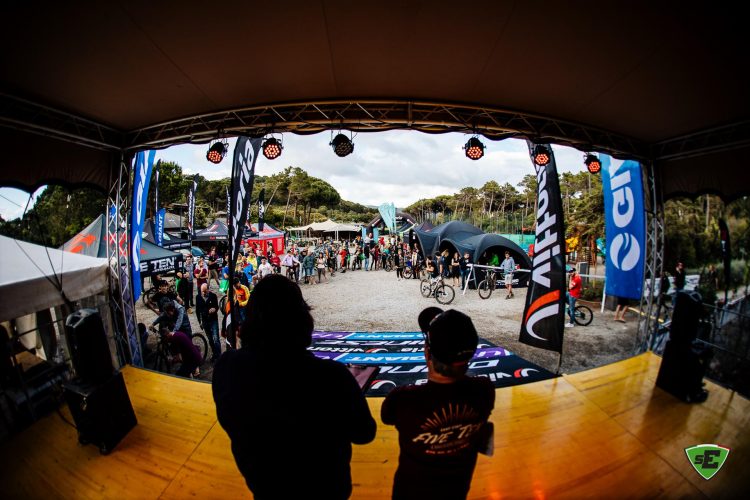
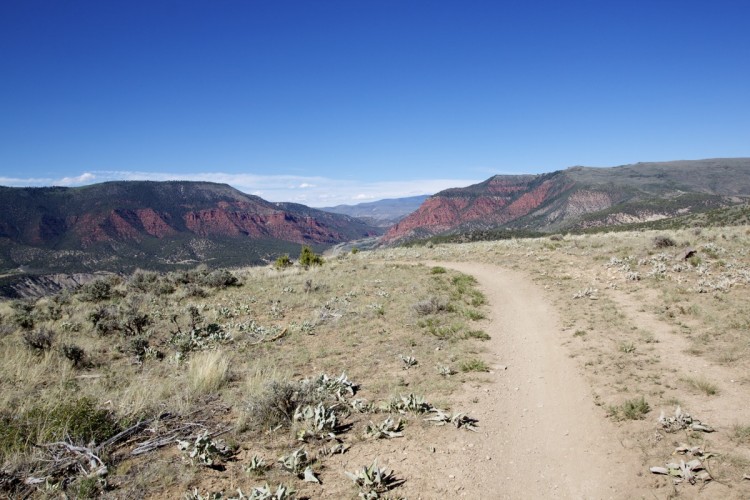

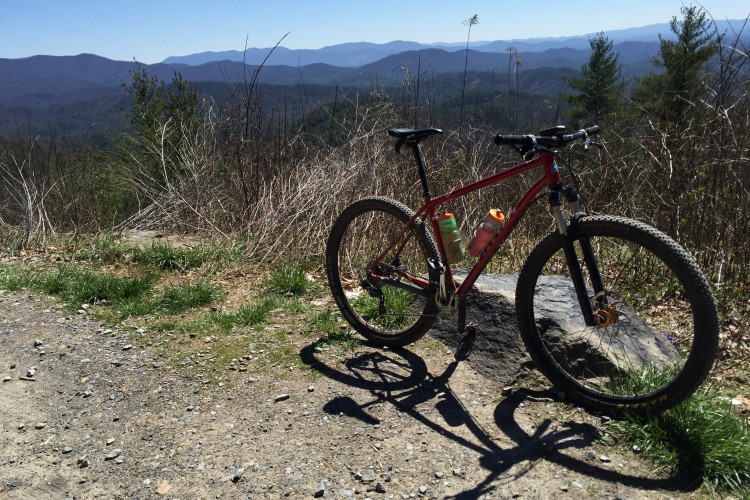
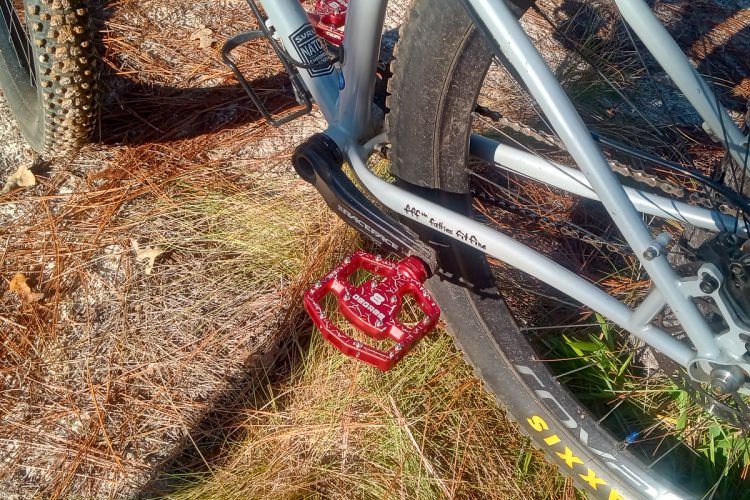
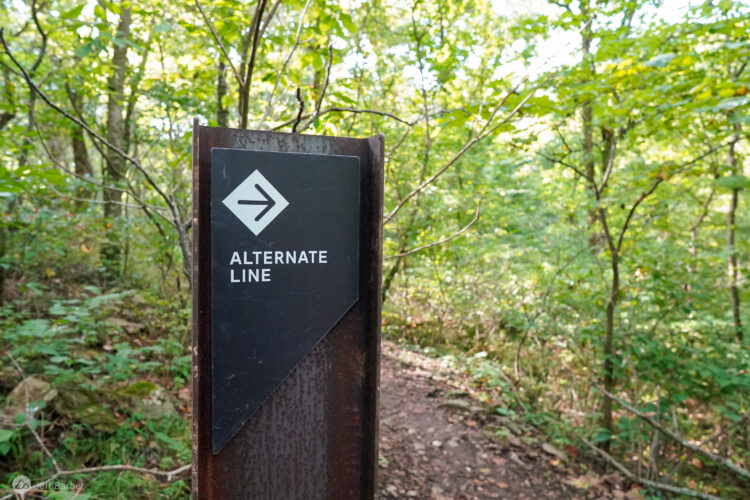
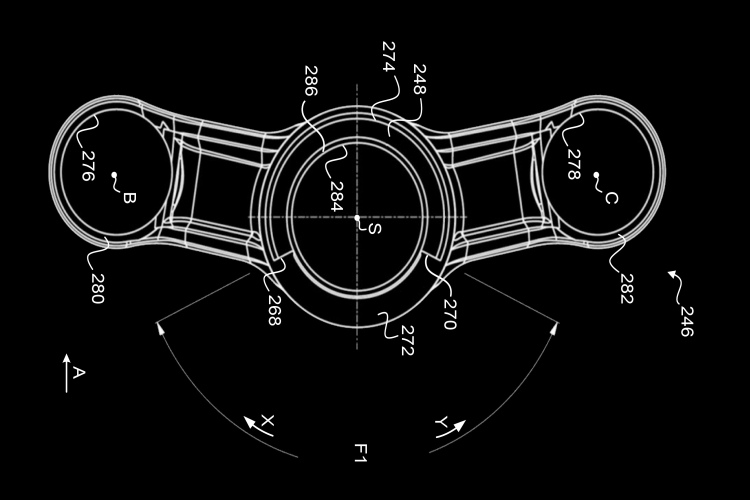
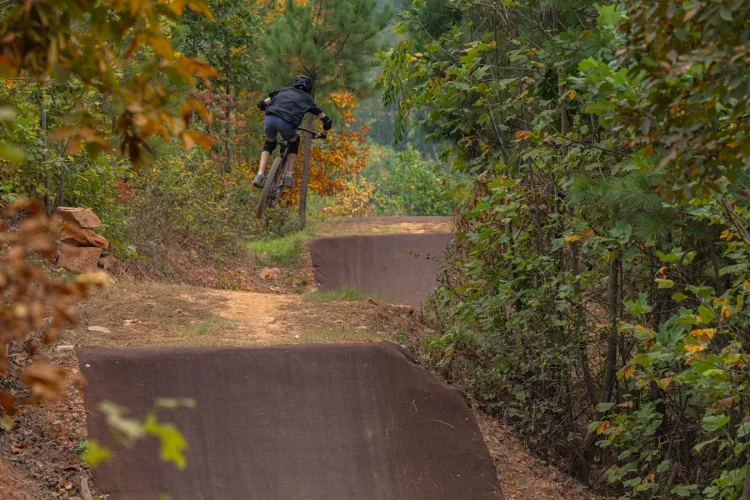

0 Comments